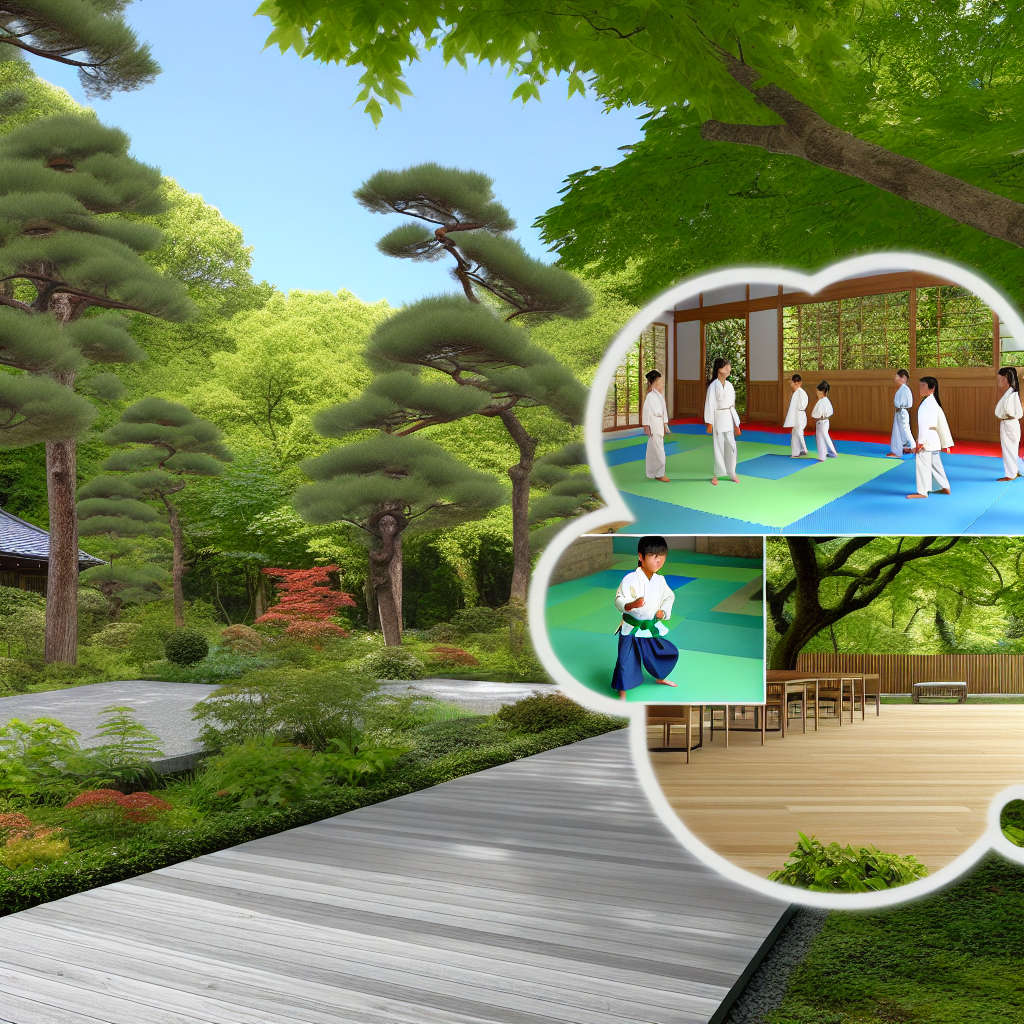Japanese Forest Bathing Estates: Luxury Properties Designed Around Childhood Wellness
Introduction: Where Nature, Luxury, and Child Wellness Converge
In the ever-evolving world of luxury parenting and child wellness, the convergence of nature, science, and opulence has become a hallmark of modern elite living. Among the most innovative wellness trends redefining estate design for affluent families is the inclusion of Forest Bathing—a ritual rooted in Japanese culture that has taken on new sophistication with the emergence of Japanese Forest Bathing Estates.
These exquisite properties are immersive sanctuaries that bring the scientifically backed mental and physical benefits of Shinrin-yoku (forest bathing) directly to the doorstep of luxury families, with a particular focus on nurturing the next generation.
Introduced in the 1980s by Japan’s Ministry of Agriculture, Forestry, and Fisheries, Shinrin-yoku literally means “taking in the forest atmosphere.” The practice goes beyond a leisurely walk in the woods; it is an intentional and immersive experience, encouraging children and adults alike to slow down and cultivate mindfulness in a natural environment.
In a technology-saturated world, where experiences are becoming increasingly virtual, families of means are seeking real-world, nature-grounded environments that support both mental health and emotional resilience in their children. Japanese Forest Bathing Estates are redefining what it means to grow up in luxury—one rooted in healing, connection, and peace.
Forest-Centered Architecture: Mindful Design for Young Minds
Designing homes around forest bathing principles starts with mindful architecture that harmonizes with the natural world. These properties are seamlessly integrated with biodiverse landscapes filled with native flora, private walking paths, and calming water elements like koi ponds, trickling streams, and cascading waterfalls.
Often nestled in verdant regions such as the foothills of Kyoto, serene Hokkaido forests, or on elevated terraces in Kamikatsu and Karuizawa, these estates balance seclusion with immersion in nature. Architects incorporate biophilic design principles—natural elements in structure and decor—to reconnect occupants with earth’s rhythms.
But what sets these homes apart is how they are tailored specifically for the emotional and physical development of children. Features such as custom-designed sensory gardens, interactive woodland learning areas, and elevated treehouse meditation pods create safe spaces for kids to explore, reflect, and grow.
For families dealing with screen addiction, overstimulation, or child anxiety, these estates serve as antidotes. Wealth is not merely displayed through grandeur—but through the thoughtful creation of spaces that instill peace, curiosity, and well-being in the youngest residents.
Evidence-Based Wellness: How Nature Heals Developing Minds
The philosophy behind Japanese Forest Bathing Estates is deeply supported by modern science. Research shows that consistent exposure to nature significantly boosts mental health in children and contributes to the development of a stronger, more resilient nervous system.
A 2018 study published in Frontiers in Psychology found that forest bathing meaningfully lowers cortisol levels—the stress hormone. When children step into a forested environment, their body enters a state of relaxation called parasympathetic activation, promoting healing and reducing anxiety.
Additional findings from a 2020 Danish longitudinal study revealed that children raised with access to green spaces had a 55% lower risk of developing mental health challenges later in life. For high-net-worth families seeking long-term wellness, investing in properties with built-in nature is not merely philosophical—it’s practical.
Occupational therapists also highlight that forested environments enhance motor skills and neuroplasticity. In Japanese Forest Bathing Estates, children experience an array of body-enriching features: rope swing bridges, multilevel climbing walls made of natural stone, barefoot sensory paths composed of varying textures (pebbles, soft moss, smooth bark), and treetop observation decks that stimulate spatial awareness.
Surrounding a child with biodiversity cultivates a deeper sense of compassion and interconnectedness. Daily encounters with native birds, insects, or tree life provoke awe—a feeling proven by scientists to strengthen psychological resilience and reduce inflammation in humans.
Building on that, the Harvard Center on the Developing Child stresses the importance of limiting exposure to toxic stress in early development. Forest environments regulate mood through gentle stimuli such as the scent of Japanese cedar, the murmur of flowing water, and the movement of filtered sunlight—all of which act as natural de-stressors and emotional balancers.
A New Standard for Luxury Living: Resilience, Not Just Real Estate
This marriage of nature and childhood development has reshaped how families view luxury living. Japanese Forest Bathing Estates aren’t simply beautiful—they are micro-resorts for well-being. Visionaries like architect Kengo Kuma and real estate developers such as Mori Building Company are pioneering structures that are immersive, healing, and entirely aligned with the natural world.
What’s equally transformative is the shift in childhood education within these environments. Many estates include outdoor Montessori classrooms, forest kindergartens, and cultural activities like ikebana (Japanese flower arranging), forest origami, and tea ceremonies. These opportunities elevate traditional learning into soul-enriching experiences.
By integrating Japanese wellness rituals with a modern family lifestyle, these properties set a new benchmark in child-centric estate design. Here, luxury is not about accumulation—it is about intention, sustainability, and legacy.
Conclusion: Growing Grounded Children in a Forest of Possibilities
As society transitions toward values rooted in experience, wellness, and sustainability, Japanese Forest Bathing Estates emerge as the gold standard for transformative childhood living. These private sanctuaries do more than surround children with beauty—they equip them with emotional tools for life: calm, focus, empathy, and connected presence.
For elite parents seeking to redefine what it means to raise a child in comfort, these estates present more than a market trend—they offer a visionary leap into meaningful, purposeful parenting. Here, the luxury of today helps grow the mindful leaders of tomorrow.
References
- Shinrin-Yoku: Forest Bathing and Health Benefits – National Institutes of Health
- Childhood Nature Exposure and Adult Mental Health – PNAS
- Harvard Center on the Developing Child: Toxic Stress
- Frontiers in Psychology – The Science Behind Forest Bathing
- Kengo Kuma and the Integration of Nature in Architecture
- Forest Kindergartens and Child Development – The New York Times
- Nature Play and Child Brain Development – Children and Nature Network

Dominic E. is a passionate filmmaker navigating the exciting intersection of art and science. By day, he delves into the complexities of the human body as a full-time medical writer, meticulously translating intricate medical concepts into accessible and engaging narratives. By night, he explores the boundless realm of cinematic storytelling, crafting narratives that evoke emotion and challenge perspectives. Film Student and Full-time Medical Writer for ContentVendor.com




